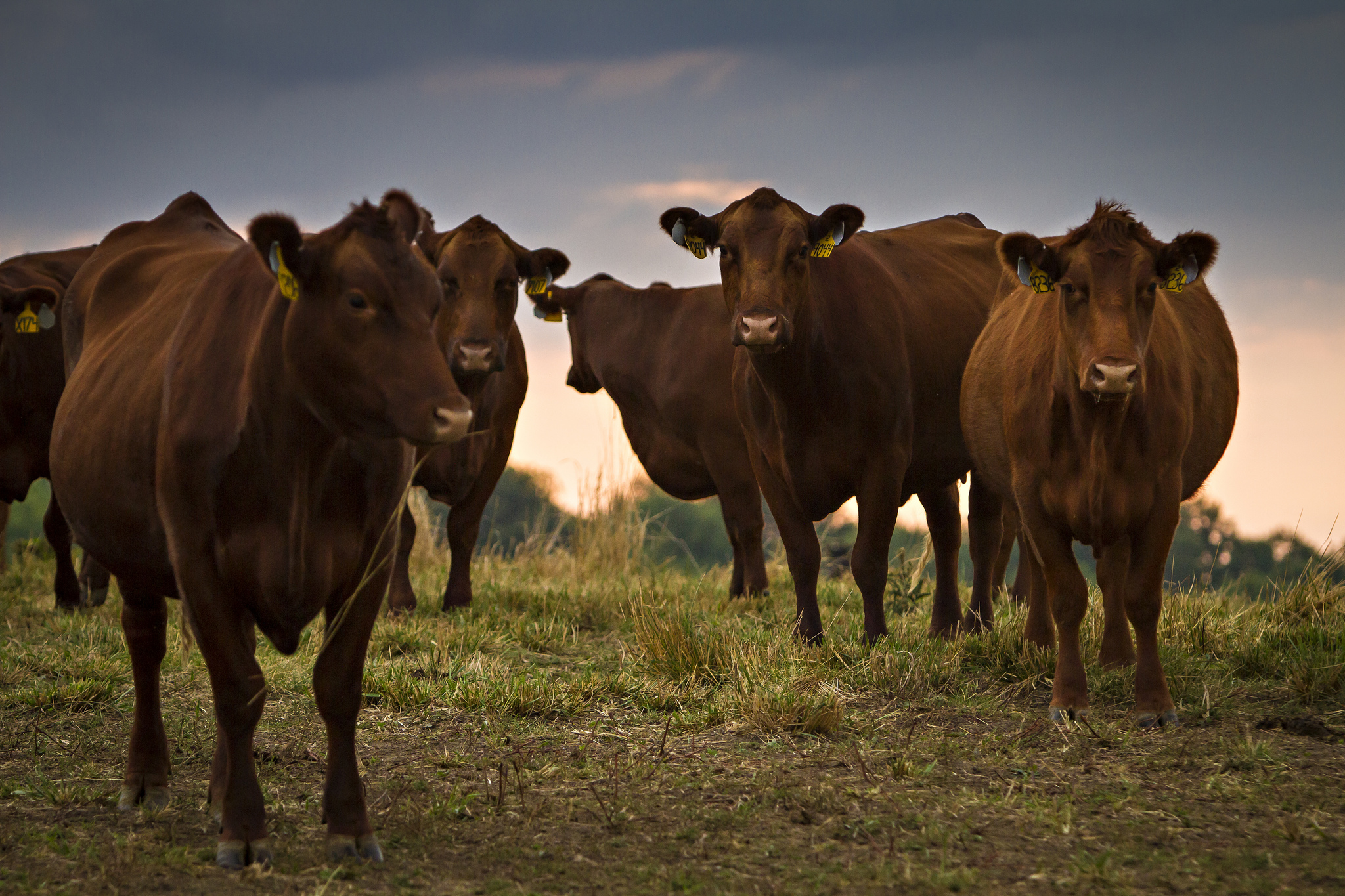Producing Food and Capturing Carbon
| Published:
An interview with Ariel Greenwood, a “feral agrarian” and grazer who manages a herd of cattle while restoring ecosystems.
Describe where you work.
I live and work on a 3,000-acre research preserve in the inter-coastal Mayacamas mountain range region of Sonoma County. Pepperwood has around 1,000 acres of open grassland, another several hundred of mixed oak woodland mosaic, deciduous and evergreen, and some serpentine outcropping, and then some dense dark woodlands. We actually have, I think, the eastern most stand of redwoods in the County. There’s a lot of bay trees and scrubby chaparral too in its own natural state. It’s a really breathtaking and in many ways really challenging landscape.
Pepperwood is a private operating research and ecological preserve. Really, every aspect from the vegetation to the soil to the broader watershed, and then even more largely the climate that we’re situated in is monitored and researched here with staff and other visiting researchers, so it’s very much a progressive conservation-oriented place. This is considered quite a robust eco-tone, the meeting of several different environments.
How does holistic management differ from conventional thinking and methodology?
It’s a broad question, because holistic management is a pretty broad comprehensive platform. But essentially holistic management is a way of managing complexity; it emerged from Allan Savory who is a Zimbabwean biologist and researcher in Africa as a way to attend to some of the problems that were plaguing ranches and grassland preserves in that area. What he found was that while people may profess to have certain values, we often do not manage our projects or ourselves in a way to actually honor those values and those goals.
Here, what that means for our planned grazing is that we regularly compare notes with the preserve about what its goals are in grazing. I graze for a company called Holistic Ag. We are a separate entity from Pepperwood, but we are essentially operating their conservation grazing program. The goal of that program is to steward grasslands, and that looks like many different things, but it’s all predicated on the notion that grasslands need grazing in order to stay healthy. So the grazing here is intended to mitigate the spread of invasive exotic annual grasses and other species. It’s intended to propagate and revitalize native bunchgrasses like Stipa pulchra. It’s intended to improve soil condition and water holding capacity, to mitigate the spread of coyote brush, which in turn mitigates the spread of Douglas fir.
Holistic Ag, of course, has its own goals on top of that. The herd was formed as an ecosystems services company, but because we are doing this with domestic cattle and have to be able to pay for the expense of doing so, we produce and sell beef, which I market under my own brand, Circle A Beef. That means we have to keep our animals healthy. There’s that added layer of complexity, but all of that is intended to be harmonized with the outstanding ecological goal of the place.
So, holistic management allows us to discover those goals, articulate those goals, and then test our decisions against those goals. A really important principle I find very hard to practice, but nonetheless very important in holistic management, is this idea that you’re supposed to assume that you are wrong, so you are actually looking for evidence that you’re right rather than assuming you’re right and, as it often turns out, avoiding evidence that you are wrong.
Because it’s so complex here in California, especially in the Mayacamas, and because we are in not only seasonally dry and wet areas, but pretty significant hills, just moving cattle sensitively across the landscape is another layer of complexity.
Holistic management is just a way to check all of our decisions and make sure they are in keeping with our actual goals. I find that if we didn’t have goals, it would be so easy to drift from our mission. Holistic management puts ecology on the forefront. That is one thing that is kind of non-negotiable with holistic management, whether it is managing a company, a ranch, or a research preserve, or all of those combined. The idea is that if you are managing for the whole, you can’t externalize costs, and the most easily externalized cost is the environmental cost. Social cost is often pretty invisible too.

